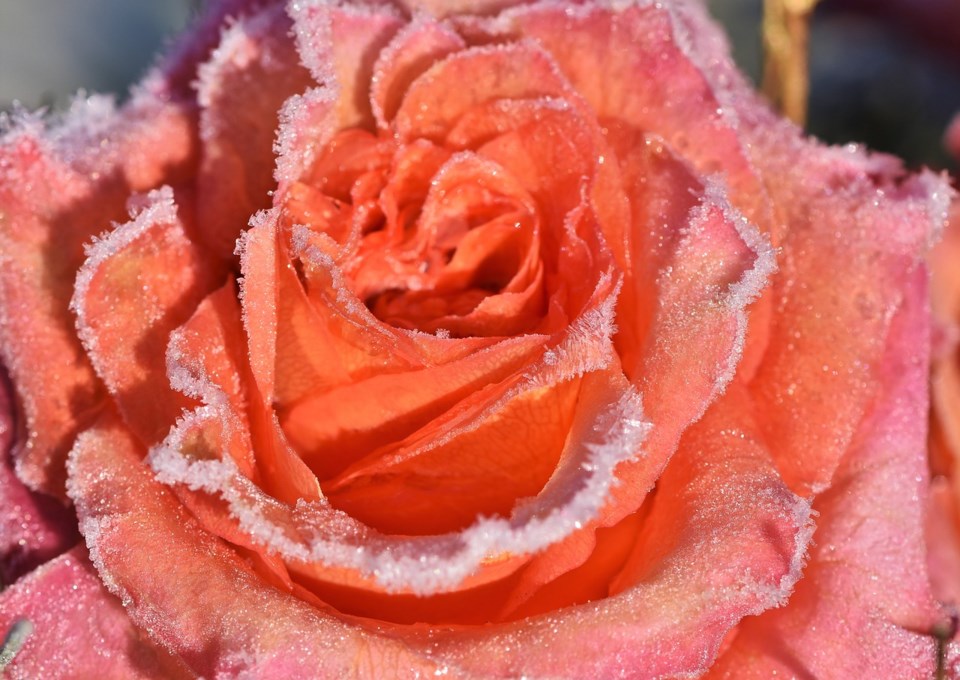Looking around my yard with its blanket of snow I see several plants that catch my attention. This year, the snow arrived before I had the time to cut back most of my perennials. Tall hollyhocks, peonies in their cages, and the usual shrubs and trees interrupt the uniformity of white. I like the effect and hope that birds will eat the seeds of my more prolific seeders to avoid having to weed out unwanted seedlings in spring.
The trees and shrubs have been in place for a few years, providing winter interest. Although red branched dogwoods are recommended by landscapers and nurseries for a patch of colour in winter, I find the best red-coloured branches in my yard are on my Therese Bugnet rose bush. It is five feet tall, providing a focal point no matter how deep the snow. Nearby is a quick-fire hydrangea. Its flowers start out white, turning to pink, red and tan as the season progresses from spring to winter. The dry tan coloured flowers stay on the shrub through most of the winter, providing another interesting interruption of the uniform blanket of snow. Retaining their dry flower heads is a characteristic of hydrangeas.
Plants provide winter interest in a number of ways. Colour is one. Branches and twigs, and the bark of trees, vary in colour. Evergreens offer a range of shades from yellow-green to blue-green, if not hidden behind burlap. Many shrubs and trees retain berries and seed pods well into winter. Red rose hips and mountain ash berries, crabapples, black cotoneaster berries and a variety of seed pods not only add interest, but also attract birds.
Texture also provides winter interest. Some shrubs are multi-branched, appearing lacy and delicate, while other shrubs appear sturdy and robust, even starkly straight and upright. The bark of shrubs and trees can be smooth or rough and may shred or peel. Not only birch, but also Amur cherry, a tree with copper-coloured bark, have bark that peels. Ninebark, a shrub, has bark that peels off in long strips.
Shape and height are another variable that adds interest. The low-growing, spreading shrubs are hidden by snow, but shrubs can vary in mature height from a few feet, just peeking out from the snow, to twenty feet, while some trees can grow to sixty feet or more. They can spread their branches wide or grow in a narrow, upright form, or even have weeping branches.
Occasionally Mother Nature coats the trees and shrubs with hoar frost that sparkles in the sun, gifting us with a picture-perfect wonderland.
This winter have a good look around your yard, do a bit of plant research, and plan adding some winter interest to your landscape.




